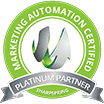MSP Website SEO (Search Engine Optimization)
The Truth About Website Search Rankings and Quality Insights for Superior Results
Learn why site speed plays an increasing role in Google's search results and how your managed IT services company website can be optimized to rank higher
Does speed influence your MSP website SEO? The answer is a definitive yes. Before you have an SEO Cow (I think that is a Canadian term for Freaking Out) read this important information on site speed.
Site speed is increasingly important when you want to attract and retain visitors throughout their sales journey. Page speed, a component of site speed, is more critical to SEO. Site speed is essential to giving customers an exceptional customer experience while visiting and interacting with your site.
What's the Difference Between Page Speed and Site Speed?
Page speed is the amount of time it takes each element on a specific page to load -- photos, videos, text, headers, links, graphics and other content. Improving (lowering) page speed is an important consideration for page rank and customer site retention.
Site speed is a more comprehensive and holistic approach to your page. It's a calculation of how long it takes for a visitor to experience all elements on their exploration of your site. It starts from the initial click onto your site, how long that first page takes to render, and the length of time for each subsequent click-through, white paper download, form creation and completion, shopping cart interface, payment processing, verification and receipting to be completed.
How Does Page Speed Affect SEO?
In 2018, Google announced its "Speed Update," indicating that site speed would become a ranking factor in mobile search. The search giant stressed that the change to its ranking algorithms would only penalize the poorest performers. Fortunately, there are some things you can do to improve your MSP page speed. First, use Google's own tool, PageSpeed Insights, which provides helpful information to measure and improve your site's performance, including:
- Speed ratings based on the past 30 days of usage
- Improvement opportunities that address page design, images and scripts
- Diagnostics that address other areas of your site that do not affect your page performance score
- Performance audits and results
Completing each of Google's recommended improvements can shave milliseconds off your total page speed and site speed times. Collectively, these improvements make a notable impact.
Page speed matters to the customer experience too. Consider Google's oft-cited stat from several years ago that 2 seconds is too long for most people to wait for an e-commerce page to load. Nearly a decade later, studies continue to emerge with hand-wringing about average site load times of 3.5 seconds. Yet slower speeds do more than just affect search rankings. Longer load times lead to more visitors bouncing away from your site. A 3-second load time leads to an 11 percent bounce rate. Take 6 seconds to load your MSP website? It's a 46 percent bounce rate.
How Can My MSP Improve Page Speed?
Here are some helpful tips for improving your MSP website page speed:
- Minimize the image sizes for each page on your site. There are plenty of free apps available to help manage your images.
- Remove unneeded and excessive images from your site
- Test your website on multiple devices and operating systems. For mobile devices, be sure to test them both with and without WiFi connections
- Use browser caching so that website visitors are not reloading your entire page every time they come back to your site
- Minify your HTML, meaning to minimize the amount of space your HTML code takes up by reducing or removing the amount of unnecessary or duplicative data on each page on your site
- Check each page for any font families, scripts or scripts that can be deleted because they are not needed for that site
- Use UX tools to look for any widgets, plug-ins or referred products that are not being used and remove from any applicable pages
- If possible remove scripts or stop scripts from rendering on any page where they are unimportant or otherwise not necessary
- Scour your pages for tracking pixels or legacy scripts that are no longer in use and remove them
- Look at each element and see if it is really necessary for the functionality and aesthetic feel of the page
- Use Accelerated Mobile Pages, a Google-supported effort to reduce the impact of JavaScript pages that can slow down your website load time fast
Speed matters for every page on your MSP website.
Ulistic helps MSPs optimize their websites for better SEO results. Speak with Ulistic today to learn more about our business development, marketing and sales services for managed IT service businesses. https://www.ulistic.com.



